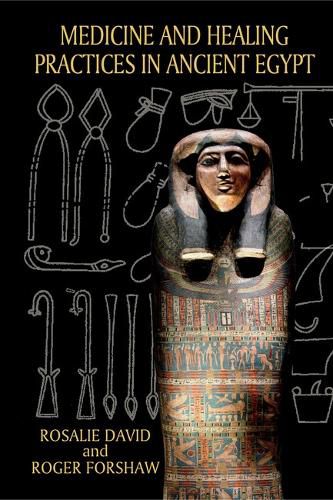Readings Newsletter
Become a Readings Member to make your shopping experience even easier.
Sign in or sign up for free!
You’re not far away from qualifying for FREE standard shipping within Australia
You’ve qualified for FREE standard shipping within Australia
The cart is loading…






Medicine and Healing Practices in Ancient Egypt provides a new perspective on healthcare and healing treatments in Egypt from the Predynastic to the Roman periods. Rather than concentrating exclusively on diseases and medical conditions as evidenced in ancient sources, it provides a 'people-focused' perspective, asking what it was like to be ill or disabled in this society? Who were the healers? To what extent did disease occurrence and treatment reflect individual social status?
As well as geographical, environmental and dietary factors, which undoubtedly affected general health, some groups were prone to specific hazards. These are discussed in detail, including soldiers' experience of trauma, wounds and exposure to epidemics; and conditions - blindness, sand pneumoconiosis, trauma and limb amputations - resulting from working conditions at building and other sites.
Methods of diagnosis and treatment were derived from special concepts about disease and medical ethics. These are explored, as well as the individual contributions and professional interactions of various groups of healers and carers. Medical training and practice occurred in various locations, including temples and battlefields; these are described, as well as the treatments and equipment that were available.
Ancient writers generally praised the Egyptian healers' knowledge, expertise, and professional relationship with their patients. A brief comparison is drawn between this approach and those prevailing elsewhere in Mesopotamia, Greece and Rome. Finally, Egypt's legacy, transmitted through Greek, Roman and Arabic sources, is confirmed as the source of some principles and practices still found in modern 'Western' medicine.
Combining information from the latest studies on human remains and the authors' biomedical research, this book brings the subject up to date, enabling a wide readership to access often scattered information in a fascinating synthesis.
$9.00 standard shipping within Australia
FREE standard shipping within Australia for orders over $100.00
Express & International shipping calculated at checkout
Stock availability can be subject to change without notice. We recommend calling the shop or contacting our online team to check availability of low stock items. Please see our Shopping Online page for more details.
Medicine and Healing Practices in Ancient Egypt provides a new perspective on healthcare and healing treatments in Egypt from the Predynastic to the Roman periods. Rather than concentrating exclusively on diseases and medical conditions as evidenced in ancient sources, it provides a 'people-focused' perspective, asking what it was like to be ill or disabled in this society? Who were the healers? To what extent did disease occurrence and treatment reflect individual social status?
As well as geographical, environmental and dietary factors, which undoubtedly affected general health, some groups were prone to specific hazards. These are discussed in detail, including soldiers' experience of trauma, wounds and exposure to epidemics; and conditions - blindness, sand pneumoconiosis, trauma and limb amputations - resulting from working conditions at building and other sites.
Methods of diagnosis and treatment were derived from special concepts about disease and medical ethics. These are explored, as well as the individual contributions and professional interactions of various groups of healers and carers. Medical training and practice occurred in various locations, including temples and battlefields; these are described, as well as the treatments and equipment that were available.
Ancient writers generally praised the Egyptian healers' knowledge, expertise, and professional relationship with their patients. A brief comparison is drawn between this approach and those prevailing elsewhere in Mesopotamia, Greece and Rome. Finally, Egypt's legacy, transmitted through Greek, Roman and Arabic sources, is confirmed as the source of some principles and practices still found in modern 'Western' medicine.
Combining information from the latest studies on human remains and the authors' biomedical research, this book brings the subject up to date, enabling a wide readership to access often scattered information in a fascinating synthesis.